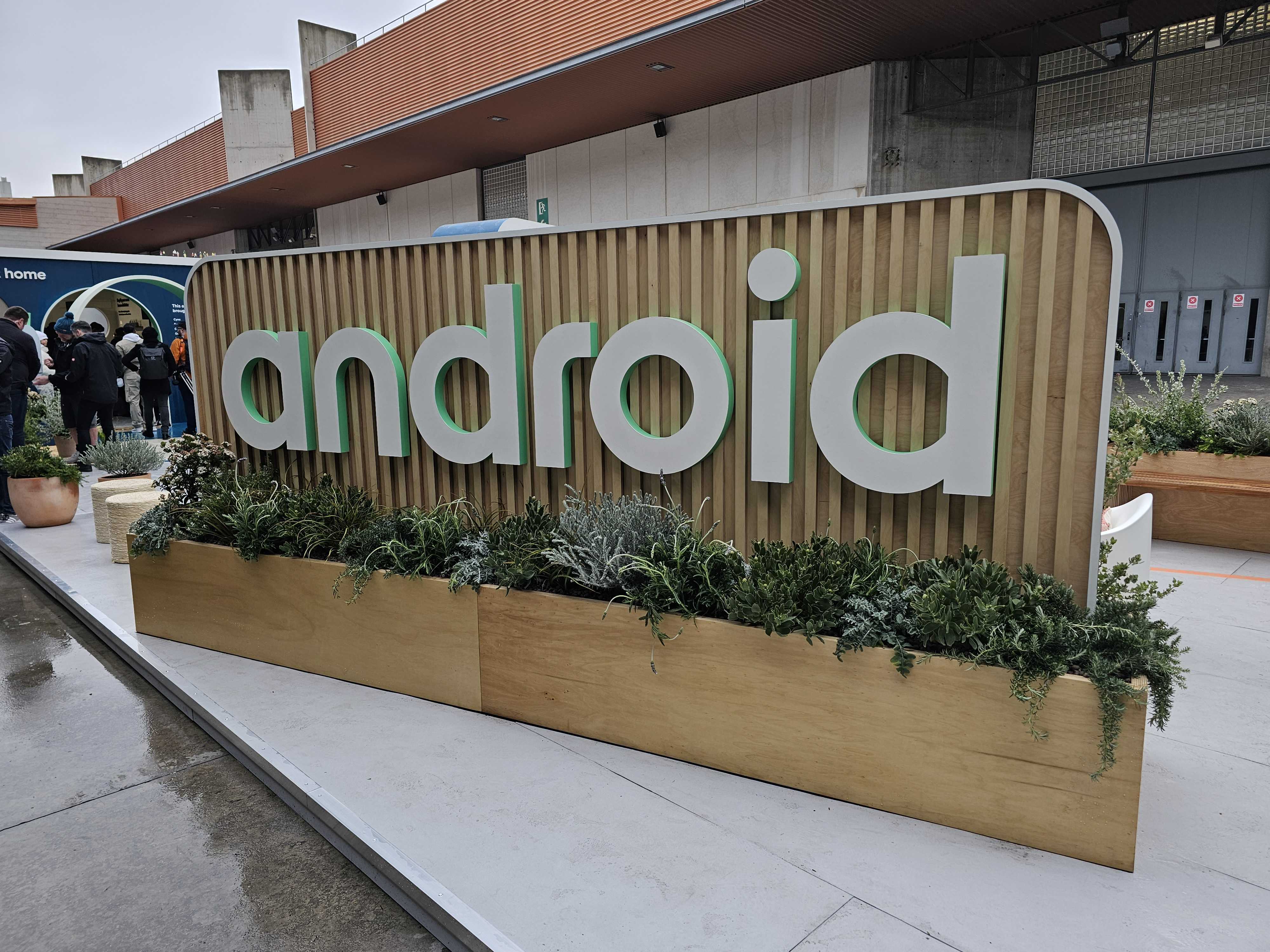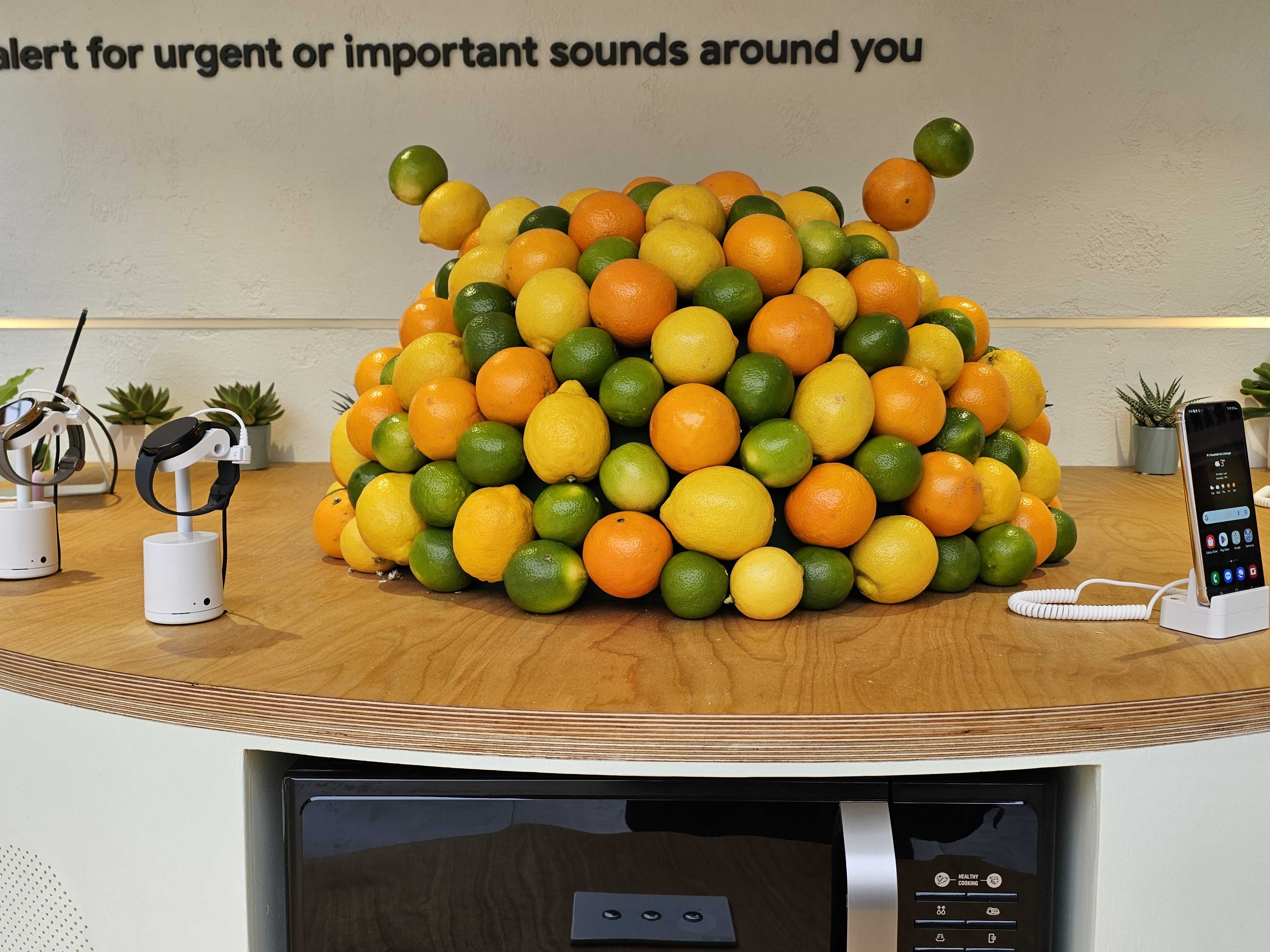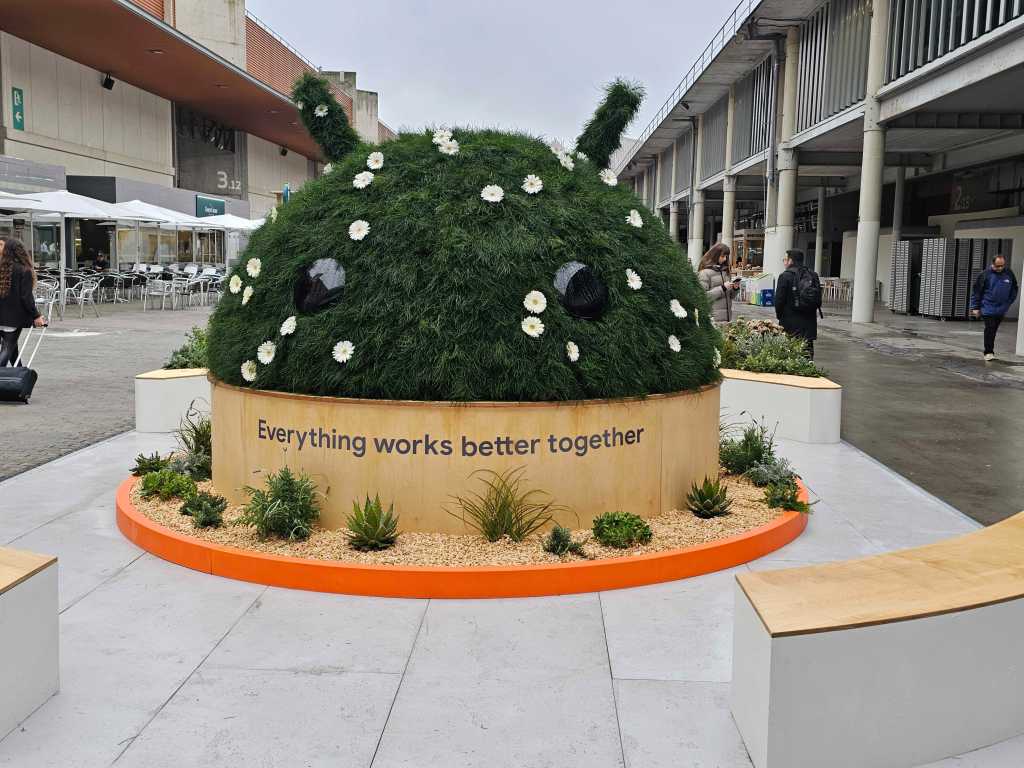Android was, predictably, everywhere at Mobile World Congress. At a show where Apple has no public-facing presence, Google’s mobile operating system is almost entirely ubiquitous. As in past years, the company also set up a sprawling outdoor booth between halls. This time, the focus was on interoperability and ecosystem.
You’d be hard-pressed to find a better person to speak on the subject than Sameer Samat; the former president of Jawbone now heads Android’s product and design team, as well as design and engineering for Google Play and Wear OS. We sat down with the executive on the third day of MWC to discuss Google’s consumer software plays.

Samat: People don’t just buy a phone anymore, they buy into an ecosystem.
TechCrunch: That’s been the case for some time.
Samat: It has, but on the Android side, having that full portfolio of devices is important.
You’re talking specifically about Google devices?
No. It’s not been the case that every major manufacturer has offered a full portfolio. I think that’s super important. It’s really important that those devices work well together. We’ve had this effort that we call “Better Together” for a while, and we’re working on a number of things that help these devices interoperate.
iOS is your main competition. That’s something Apple has done well for a long time. It’s a big part of why people buy their products. Do you look at what they’re doing when building out features?
From a consumer standpoint, it’s very clear that people have more devices in their life. The average U.S. household has 20-plus connected devices in their home. We hear feedback from consumers, and individual manufacturers have implemented these things. Usually on these things, some Android manufacturer has gone and done it first. The reverse happens a lot of times. Apple sees something they think is cool and copies it that way — always-on displays. The difference is: Can you do it widely across the ecosystem? Can you do it where you can cross pair between different devices from different manufacturers, and can you do it at scale.
People ask me for earbud recommendations. Nine times out of 10, I ask them who makes their phone. Manufacturers’ devices tend to work better with their own product.
There’s always opportunity for manufacturers to differentiate. I think that’s good and should remain. But I also think there are basics that need to be standardized, because it provides a level of choice to consumers that they appreciate and they expect in our ecosystem.
Wear OS/Android Wear seemed stagnant for a long time. There does seem to be a renewed effort around the Pixel Watch, however.
We were very early to the watch space. We helped pioneer a lot of things that went into smartwatches. At the beginning, the use cases weren’t very clear. There were a lot things that people wanted their watches to do. There was a view that maybe it was like a phone on your wrist. Over time what’s develop is a set of key pillars — use cases that the device is awesome at, and that will grow over time.
Health came in and completely dominated the conversation.
Health is important. The watch is one of the only electronics that you wear on your body, 24/7. With your permission, it has access to your vitals and these days, health is a big concern for all of us. Technology assisting us with that is very in line with our overall mission, and a lot of what our partners want to do for consumers. As we’ve honed that, there’s been an opportunity to refocus the platform. It started with our partnership with Samsung around this. For a while, they had done something different with their watches [Tizen OS]. We got back together and made an effort to restart that.
With Samsung, Wear OS suddenly has a lot more market share overnight.
Yeah. I think when you find the right market fit with those core use cases and you do it with the right hardware and a great partner like Samsung, it gives you an opportunity to get out there and show consumers what’s possible.
This is one category where Apple was extremely dominate in market share. After the recent updates, if you push Samsung to the side for a moment, are you seeing a lot more adoptions?
Yeah. There are a lot more people buying Wear OS devices, and there will be a lot more devices coming from other partners this year.
Smartphone sales were declining before the pandemic, and that trend has accelerated in the last few years. Will the decline continue to grow?
The market is definitely changing and reaching a new phase. I don’t know that year over year sales is quite the right way to look at this […] There will always be sales of new phones. But I think you’re now reaching the point where this is, for many people, it is their primary computing device. So, there are different and more interesting ways of looking at the market. I think in terms of what are you able to do with these devices? What does engagement look like? What are the services that you’re utilizing? And how is it integrated with other parts of your life? We talked about tablets and we talked about watches, but why are you getting a tablet or watch? It might be all about productivity for you or entertainment. That could be replacing the time you spent watching a big screen television or it could be that you’re using the watch for fitness. In some ways, the watch becomes like the new pair of running shoes. It’s like that promise to yourself that you’re gonna get in shape.
It’s aspirational.
So the real question is not as much for me how many phones are sold? But what is this technology meaning for people across the different aspects of their life? Sure. We need to look at the attachment of different devices. The second part is that devices are lasting longer.
Manufacturers painted themselves into a corner. If you spend $1,000 on a device, it’s probably going to last five years, and not the two or three that were set up by the carrier system.
I think it’s really important that these devices last a long time. We’ve done a few things on our side to support that kind of that. A lot of the top Android phone manufacturers are now offering their four years or five years of security and OS updates. And on top of that, we’ve retooled a lot of the platform and innovated around providing more frequent updates in between those OS updates.
Apple’s not selling many devices. I think they saw that coming and shifted their focus toward monetizing services. The Android revenue model is very different for every company that isn’t Google. They rely on your apps and services. What does the shift in monetization look like for them, now that they’re not selling as many devices?
It’s something a lot of them saw coming. I don’t think it was just Apple. We’ve been in the services business —
For much longer than you’ve been in the phone business…
Hardware is newer for us than services. We have a business model around people using our services. We partner with manufacturers. It’s not a secret that we share in that success. I think there’s going to be more of a movement toward models where devices themselves are sold more as a service. I think there’s a lot of innovative work going on in the carrier side to figure out how you buy a device for less up front, you use it and return it after a period of time and you get another device as part of your overall subscription.
Is Google still committed to Android Go?
Absolutely. The purpose of Android Go is to make sure that entry-level devices have a really high-quality experience. We built Android Go because we saw an opportunity to make sure that when you buy the device, even though it might be less expensive than other devices, that doesn’t mean the experience should be poor.
How bullish is Google on AR and VR?
I think we’re excited about the possibilities of AR and VR. We’re not strangers to the space. We’ve been pioneers there for a long time, and we’re seeing the next generation of the technology now. We’ll be right there with the industry participating in that.
Is there a role for Google to play in the metaverse?
The team that I run at Google is a platform provider. The great thing about the ecosystem is that there are a number of companies that have a vision of what they’d like to see happen. We have developers who like to participate. Where the platform can be relevant is in making sure that there is a way that developers can leverage their interest across different providers and ensure that the experience scales for them. I think the most important thing about AR and VR right now is just like watch. It’s making sure, as an industry, we come to the use cases that truly resonate as a consumer.
There are always regulator concerns around anti-competitive activities. Look at what’s going on in India right now. How much of a challenge are these sorts of laws and regulations for your team.
As a platform provider making technology that is important in people’s live, I think that governments around the world representing their citizens should be involved in looking at that technology carefully. We have a responsibility to make sure that we’re integrating that technology well into society. Different countries have different opinions on how that should work. I think it’s a constructive dialogue for the most part around the world where governments want to engage in that kind of discussion — what role should society play? We welcome that, and we should be engaged in that conversation responsibly. It takes time and is a new component of what we do today. Fifteen years or so ago, it wasn’t a big part of what we do. But it comes with the territory of playing an important role in what people do.
Will Google continue to aggressively push back against some of those decisions?
The important thing Google will do is continue to make products that we hope consumers will love. Of course, where we think that there are elements of policy where we can help educate, we will engage to do that in the right way.
The EU has been at the forefront of much of this digital legislations, whether it’s GDPR, USB-C or the right to repair. What has the climate been like when it comes to dealing with the European Union?
For tech in general across the world, whether it be the EU or any other country where tech is playing a big role in society, there are appropriate questions being asked about how that should happen. On the surface, one might try to say that’s a challenging environment. I prefer to think about it as what happens when technology in a particular area goes mainstream and becomes such an important part of life.
Democracies then look at it as how do we want this technology to interact with our citizenry, and what should that relationship be like. That’s a responsibility that we have to engage in that way. We have a very productive dialogue set of conversations with the European Commission and the EU on a number of things. We have a very productive dialogue with the equivalent organizations in Japan and Korea and a number of places. There are certain instances where we’re helping to educate on policy. There are certain instances where we may disagree, and we need to explain our position. There are certain places where there are laws, and we have to be compliant with those laws.

U.S. trade embargoes have kneecapped Huawei. How do those sorts of things impact you and your team?
We work with a lot of partners around the world, so it’s not a new thing to us that there are certain geopolitical events that occur that cause one or more of our partners to have a challenge. You mentioned U.S. government action, but take the pandemic, the supply chain challenges and how demand and supply become imbalanced. It’s a global world, and all of these things are interconnected. […] We want to support a healthy ecosystem. The good news is there are partners in lots of different geographies, and we work with all of them to try to make sure that they can build and be successful in the ecosystem. Obviously, we have some limits in how we can participate in China, and that’s fine. We have found ways to work with partners so that they can be successful.
Have you played with [Huawei’s] HarmonyOS?
I haven’t played with HarmonyOS and am not in the best place to give it a review.
It seems like they’ve made a lot of progress.
I think they probably have very smart folks working on that. We have a lot of respect for companies that can do that. That’s innovative. There’s a lot of competition. It’s always felt like a pretty vibrant ecosystem, whether it’s manufacturers building their own operating system or taking open source Android and building their own variant, which many companies have done. There’s a ton of competition.
You say there’s a ton of competition. There are some smaller players like Sailfish, but in terms of market share, no one can touch [Android and iOS].
I think there are plenty other competitive solutions, whether it be Fire OS from Amazon or the original JioPhone that launched in India and has hundreds of millions of subscribers and didn’t run Android. You mentioned Harmony. In China, there are a number of variants of open source Android. There’s a lot going on, and I think for our part, it’s something we always have to make sure we’re delivering from a platform standpoint is useful and good. Android is open source. If someone wants to build their own version of it, they’re free to do that. So if someone wants to go and build their own versions of it, they’re free to do that. So we have to have compelling reasons technically, and in terms of consumer experience, why you should use the Android platform.
































Comment